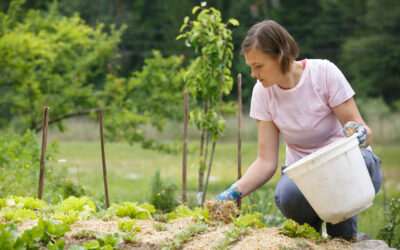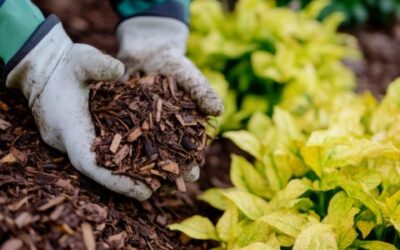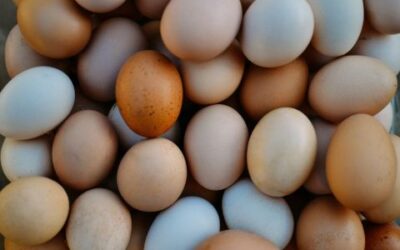Inside of a Horse
Mackenzie Fitzpatrick Brings a Horse’s Digestive System to Life
Mackenzie Fitzpatrick has been talking about the inside of a horse for more than ten years. As a Territory Sales Manager for the Kent Nutrition Group, she speaks to suppliers, farmers, 4H groups, attendees at major equine events, and anyone who will listen about what goes on in the equine digestive system. Her presentation is dynamic, interactive, funny, and a little gross, but mostly, it’s enlightening. That’s because of how important understanding what’s going on inside of a horse is to understanding why we feed him the way we do – and the impact on his overall health. Fitzpatrick talked to Lucerne Farms about her intimate knowledge of this unique system. Here’s a little of what we learned.
Down the Hatch
“It’s kind of an inside look,” Fitzpatrick said about the presentation, which includes a bucket, a 100-foot hose, a lot of bubble wrap and some repurposed props. The goal of the aptly nicknamed “gut bucket” is to show the importance of all parts of the equine digestion system.
The role of the teeth and mouth can’t be underestimated when it comes to proper digestion. A horse’s jaw sweeps, or chews, more than 60,000 times a day, introducing a lot of saliva – an astonishing 10 gallons a day – to make the forage wet enough to create small balls that can make their way down the esophagus. The teeth continue to “grow” at the rate of 1/8 of an inch every year to accommodate the continual grinding, flattening the teeth so they can chew properly. A sore or abscessed tooth inhibits proper chewing, and that can begin a downward spiral for a horse, said Fitzpatrick, affecting the ability to chew properly swallow and digest, ultimately leading to health, nutrition, and weight issues.
A horse, Fitzpatrick explains, seems like it’s put together incorrectly when we look at the horse’s life today. “We don’t have the same amount of land they were designed to walk on, we ask them to hang out in a dry lot, be ridden, be racehorses…they don’t always have the space to walk around during the day,” she said. A “natural” horse – one that mirrors the horse’s natural behavior as closely as possible – is one that is allowed to wander and graze 5-15 miles a day and is eating 18-22 hours a day. “That’s not easy to replicate in this day and age,” she said.
A Better Total Ration: Forage & Fiber
“The more often we can mimic that natural way of eating, the better off the horse is going to be,” said Fitzpatrick. In addition to helping people better understand the equine digestive system, Fitzpatrick travels to farms and meets with horse owners to help them with their horse’s nutritional needs. “Often that is going to be a high-fiber ration,” she said. Horses are hind-gut fermentation vats that are designed to digest fiber. Fiber moves efficiently through the gut, is important for the bacterial population in the intestine, and supplies energy slowly, reducing sharp changes in blood glucose, for example.
“You can have great looking hay that’s only 40% digestible, so you are wasting a lot of it.”
Fitzpatrick said she is reluctant to make recommendations for horses where 50% of their diet is not in forage. The general guidelines for feeding a horse is to feed a total ration made up primarily of a forage product and balanced with a vitamin/mineral package. Forage products can be hay, pasture, hay substitute, or a pelleted hay forage supplement. Vitamin/mineral packages are often the “grain” used to deliver required vitamins, fats, and/or fiber. Grains, while not strictly a “natural” way of eating, are integral to the diet of today’s horse. The general rule is a total ration of 1.5% to 3% of body weight, though nutritional needs can vary widely. Needs for a pasture horse are much different from that of a thoroughbred in training or a mare with a foal. Fine tuning that ration is an opportunity to make things easier for horse and owner.
That’s where Fitzpatrick comes in. She works with clients to create the optimum balance, drawing from over 30 different feed options in her portfolio. She may recommend a vitamin/mineral package for an owner that favors a diet heavy in oats, for example, or recommend a higher quality hay, a frequent suggestion, she said. “Test it, look at digestible proteins, see what the energy content is, how digestible the fiber is in the hay,” she advises. “You can have great looking hay that’s only 40% digestible, so you are wasting a lot of it.”
There are an increasing number of product options available that respond to our growing knowledge about nutrition, especially for older horses. But for Fitzpatrick, when it comes to what’s best, the proof is in the pudding. “In my industry, nutrition is, in a sense, fairly easy,” she said. “You can try it and know if it works or it doesn’t. Did it create a shinier coat? Was the horse losing topline and that was fixed? If it helps the horse’s overall health, we know they are getting what they need.”




